As the main material from which plastic pipes are made for sewer, water supply and heating systems, household use, in our article we took polypropylene due to the greatest prevalence and versatility of such pipes.
Purpose and main technical parameters
General international marking polypropylene pipes denoted by two capital letters - PP. Polypropylene itself is modern material, which is based on thermoplastic polymers. Accordingly, it is a product of the chemical industry.
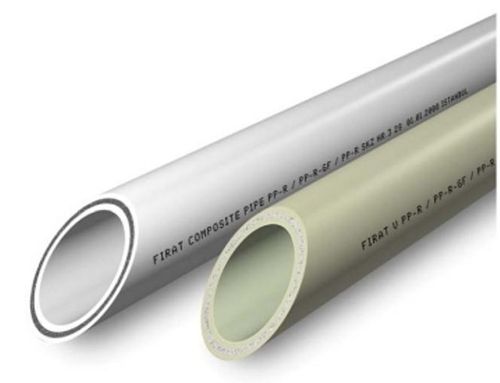
Like all building materials, plastic pipes (PP) have the appropriate state standards (GOST), technical properties and the characteristics of which you can see in the table we attached:
| Name | Measurement technique | Magnitude |
| Density | GOST 15139 | 0.9 g/cm3 |
| Melting temperature | GOST 21553 | 149°С |
| Tensile yield strength | GOST 11262 | 24-25 N/mm2 |
| Tensile strength | GOST 11262 | 34-35 N/mm2 |
| Relative elongation at the moment of reaching the yield point | GOST 11262 | 50 % |
| Linear expansion coefficient | GOST 15173 | 0.15 mm/m°С |
| Thermal conductivity at 20°C | DIN 52612 | 0.24 W/m°C |
| Specific heat capacity at 20°C | GOST 23630 | 2 kJ/kg°C |
One of the most important characteristics of pipe products is their cross-sectional size, that is, diameter. About such a technical indicator as the diameters of sewer pipes plastic pipes(plumbing, heating), we will tell you in more detail.
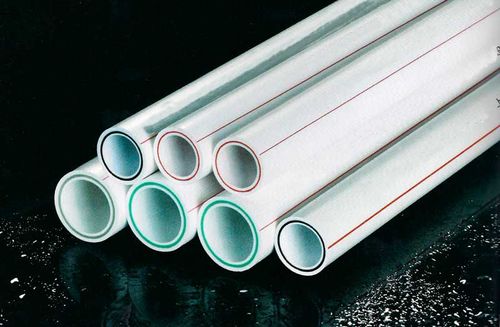
Diameters of plastic pipes
Conventionally, the diameters of plastic (polypropylene) pipes can be divided into three groups:
- Pipe outer diameter;
- Inner diameter;
- The nominal diameter is indicated in the technical documentation of the product.
It is precisely because of the nominal diameter that we used the word “conditionally”, since in fact there are only two diameters. The most interesting thing is that domestically produced plastic pipes are used as the main indicator outer size pipes. Whereas products from foreign companies use its internal diameter as the basis for marking pipes for water supply, sewerage and heating.
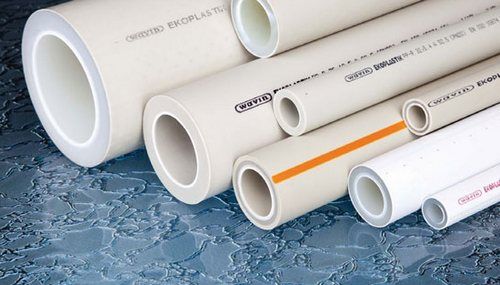
Internal and external diameters of polypropylene pipes
Basically, pipes of small cross-section (16, 20, 25, 32 and 50 millimeters) are used for laying internal communication systems for water supply, heating and sewerage inside buildings.
Plastic pipes large diameter(from 50 to 100-110 mm) are more in demand when laying main pipelines for drinking water and sewer discharges in municipal services.
As an example, we give the diameters of plastic pipes in the table:
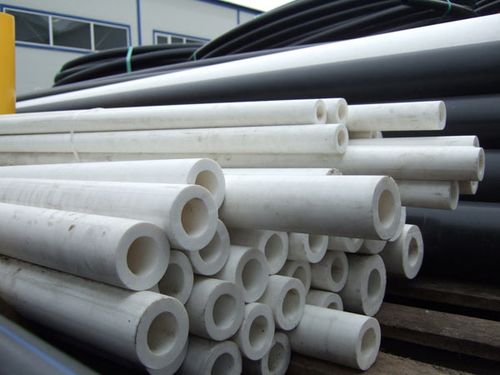
Types of polypropylene pipes by area of application
As such, there are only three types of PP pipes. This:
- PN10;
- PN20;
- PN25.
But this is quite enough to completely replace technologically outdated metal pipes.
A thin PN10 pipe with a service life of about 50 years is used for laying cold water supply and installing heated floors, which can confidently be attributed to heating systems, devices of non-pressure storm and sewerage communications. Diameter (external) varies from 20 to 110 mm. The internal diameter of plastic pipes (PN10) ranges from 16 to 90 millimeters.
More detailed tables indicating all the parameters you need for plastic pipes of domestic and imported production can be found on our website.
PN20. A pipe with a shorter full service life (up to 25 years) and a smaller internal diameter with the same external dimensions as PN10. But these shortcomings are compensated by greater wall thickness - up to 18.4 mm. As a result, the nominal internal pressure is increased to 2 MPa, that is, almost doubled. In addition, such pipes can be used for full heating, since the temperature hot water they can be 80-90 degrees. For PN10 this figure does not exceed 45 degrees.
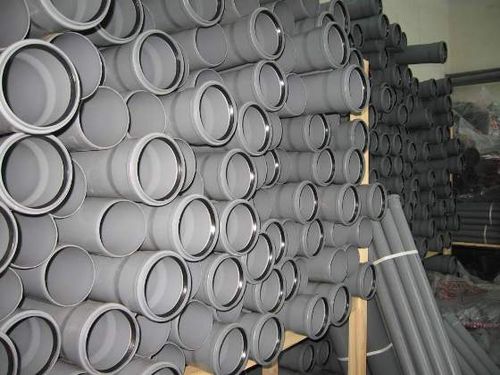
PN25 pipes. Product reinforced with glass fiber or aluminum foil(film). The service life of these pipes depends on the internal pressure and temperatures of the medium. Specifications look like this:
- Pressure – 2.5 MPa;
- Outer diameter – 21-80 millimeters;
- Internal – 13-50 millimeters;
- Wall thickness is 4-13.4 millimeters.
Accordingly, the cost of a plastic pipe varies depending on the named characteristics.
Advantages and disadvantages of PP pipes
To the main positive qualities these modern pipes relate:
- Environmental Safety;
- Long service life – up to 50 years;
- Resistance of polypropylene products to freezing (meaning internal media) and subsequent defrosting. PP pipes have the ability to expand when exposed to low temperatures and return to their previous shape without destroying or changing the shell;
- Fast and convenient installation of communications;
- High resistance to aggressive chemical influences;
- The internal parts of such pipelines are not subject to corrosion, as well as blockages and siltation (if installed correctly);
- Relatively low cost.
Conditional disadvantages include:
- Sensitivity to frequent high temperature changes;
- Use in fire hazardous areas is not recommended.
The answer to this question is quite simple, but very important. To ensure the most efficient work any of the pipelines we mentioned earlier, that is, its throughput.
You probably noticed that the diameter of PVC pipes varies depending on their purpose. In general, PVC pipes are very popular construction material, used in the installation of household and industrial communications. This is due to its many advantages:
- durability and reliability in operation;
- excellent resistance to corrosion (both external and internal layers of pipes);
- high strength of the casing, which allows pipelines to be laid underground to significant depths;
- light weight of PVC pipe, facilitating the installation process;
- resistance to high temperatures (PVC begins to melt only when exposed to temperatures of 180-220 0 C), etc.
However, you need to keep in mind that compared to polyethylene, polyvinyl chloride is very sensitive to shock loads, and the lower the ambient temperature, the higher the fragility (the material becomes brittle at temperatures from -10 0 C).
Areas of application of PVC pipes of various diameters
The classification of PVC pipes depending on size is as follows:
- Internal communication systems - PVC 20 pipe or PVC 50 pipe is suitable, as well as pipes with a diameter of 25, 40 or 50 mm. For example, such pipes can be used as hoses for.
- and riser can be installed using PVC 150 pipe. PVC 110 pipe can also be used.
- Pipes with large diameters are intended for.

Pipe diameters for external sewerage systems
For laying external sewerage PVC pipes of the following diameters are used:
- 160 mm. With the help of such products, non-pressure sewage systems are built for domestic, agricultural and industrial facilities. Pipes are produced painted in . In this case, the length of the PVC pipe can be 1, 2, 3 and 6 m. It depends on the thickness of the walls of the product (hardness class). For example, PVC pipe SN4 can be buried 8 m underground, and SN 2 - no more than 4 m.
- 200 mm. The production of PVC pipes is aimed at the installation of non-pressure sewer pipelines serving large residential buildings or industrial building, that is, where the volume of wastewater is quite large. PVC pipe 200 is suitable for laying to prevent flooding in the event of heavy rainfall on city streets and squares, as well as in car parks and parking lots.

For farms and agricultural enterprises, it is important to build a drainage system using 200 mm pipes. This allows for high-quality and quick disposal of fecal and other waste generated during the life of animals.
- 315 mm. If there are increased requirements for operational properties and the quality of the non-pressure sewer main, the use of polyvinyl chloride pipes with a cross-section of 315 mm is justified. Despite the fact that the internal diameter of a PVC pipe is more than 30 cm, the products are relatively lightweight and have all the advantages of PVC pipes. The walls of the product are three-layer: for the manufacture of external and inner sides Unplasticized polyvinyl chloride (UPVC) is used, and for the intermediate layer - UPVC, molded by continuous extrusion with foaming.
Types of PVC pipes depending on the method of operation
All PVC pipes are also classified according to their purpose:
- pressure water pipes;
- non-pressure sewer;
- , for installation of wells (equipped with thread).
Pressure pipelines made of PVC pipes
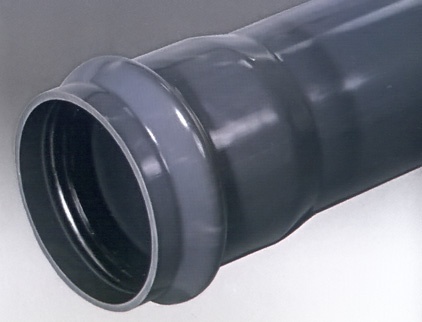
Manufacturers produce pressure pipes made of polyvinyl chloride as socket pipes with a standard length of 6 m.
When purchasing pipes, please note that the standard pipe length indicated by the manufacturer does not include the socket length.
Each end of the pipe opposite the socket is equipped with a rubber ring necessary for sealing and tightness of the connection. With their help, both a sewer system and a sewer system can be installed.
The service life of such pipelines is at least 50 years, which is confirmed by studies conducted in Europe.
Free-flow PVC pipes for sewerage
When laying external sewage systems that operate by gravity, free-flow PVC pipes are often used. The permissible operating pressure in the network is no more than 0.16 MPa. Acceptable Maximum temperature PVC pipes when transporting wastewater no more than 45 0 C, minimum – 0 0 C.
The pipes are also painted red and come with a socket, which makes installation operations quick and easy. Manufacturers offer the following PVC pipe sizes: 0.5, 1, 2, 3, 4, 5, 6 m plus socket length.
IN construction stores You can purchase free-flow pipes of various stiffness classes:
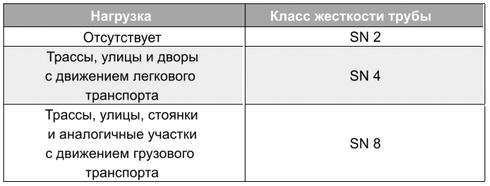
- light type - SN 2, can withstand a load of 2 kN/m2;
- medium type – SN 4 – 4 kN/m2;
- heavy type - SN 8, respectively, 8 kN/m2.
PVC casing threaded pipes for well construction
Such products are used for the installation of water intake wells and technical ones transporting chemical reagents, because the positive characteristics of PVC pipes include resistance to the effects of many chemical substances. This type of pipe is characterized by coloring in white and dark gray shades, length – 3 and 4 m.
The design of the casing pipes provides for the presence of a threaded socket, which makes the pipelines even more reliable and airtight. In addition, threads increase the resistance of pipe joints to horizontal and vertical loads created by tensile forces from internal or external pressure. For example, a PVC pipe with a diameter of 125 mm does not collapse under a load of 5 tons or more, increasing the safety factor by 7 times for a well 200 m long.
Plastic pipe has the highest anti-corrosion properties and durability and is used when laying cold and hot water supply systems, sewage systems and transportation of chemical media.
To carry out more accurate calculations, the wall thickness is taken into account:
Main parameters of polymer pipes
When calculating pipe sizes, the following are taken into account:
- Working pressure, allowing to classify structures into: vacuum (discharged), non-pressure with gravity transportation of liquid and pressure, operating under pressure.
- Installation type - open or closed. Internal structures are used for installation indoors and have a smaller parameter compared to external systems. External pipelines are laid underground or on its surface. When laying underground, special channels, gutters and tunnels are used, or installation is carried out without them.
- Purpose. There are domestic, industrial and municipal systems with different types connections: detachable and permanent.
- Bend radius. Flexible lines are subject to bending at a radius not exceeding 10 external cross sections. Flexible pipes are characterized by a bend radius of 20-125 D, and rigid ones have a radius of 300 outer diameters and above.
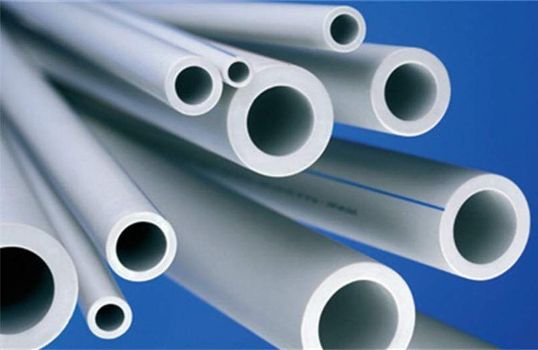
Pressure and gravity structures made of PVC and PP, spiral PE pipes, and corrugated pipes based on a two-layer or multilayer composition are widely in demand. The parameters of pipes are affected by the presence of reinforcement.
Non-pressure PVC pipes
PVC pipes are used for laying external non-pressure drainage systems with a maximum pressure of 1.6 atmospheres and a temperature of 0-45°C. They produce single-layer and multi-component PVC structures corresponding to a stiffness class of 2 kN/m2 - 8 kN/m2.
The length of the rental is 50 - 600 cm. Hermetic performance is achieved through installation in a socket with a rubber seal. Design markings include:
- Ring hardness index SN.
- Wall section en.
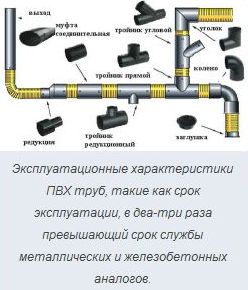
Pressure systems
Pressure systems are used when using water mains under pressure. The socket connection is ensured without the use of welding. This allows for quick and economical installation. Standard parameters markings define:
- Nominal cross-section dn;
- SDR is a parameter obtained by dividing the external cross-section by the thickness of the polymer.
- Series S
- Voltage.
- Material cross-section en.

PE pipes with high densities
PE pressure lines are used for external laying of pipes transporting liquid and gas. PE is used for the production of structures low pressure with high density (less popular version PE-63, standard PE-80 and more powerful PE-100).
Each brand is characterized by its own characteristics:
- PE 63 is a linear homopolymer containing ethylene molecules. It has high short-term strength, but during long-term use it leads to cracking and destruction. The MRS parameter displays the duration of retention of strength characteristics at a pressure of 6.3 MPa.
- PE 80 is used for constructing pipes with a diameter of up to 90 mm, capable of withstanding high levels of pressure on the walls.
- When laying large-scale water mains, in order to save raw materials, PE 100 products are used - large-diameter plastic pipes. Prices for pressure systems with a cross section from 16 to 1200 mm are determined by the operating pressure parameters - 0.4...2 atm., the length of structures with a nominal cross section of 11 - 120 cm reaches up to 12 m. With a cross section of less than 11 cm, the length of the pipes is 50- 1000 m, delivery is made in coils or coils.
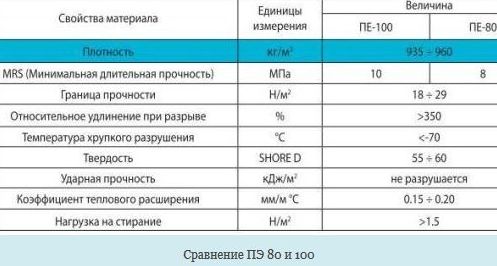
Systems are classified according to their main characteristics:
- Nominal cross-section dn;
- SDR is a parameter obtained by dividing the external section by the wall thickness.
- Series S
- Voltage.
- Wall section en.
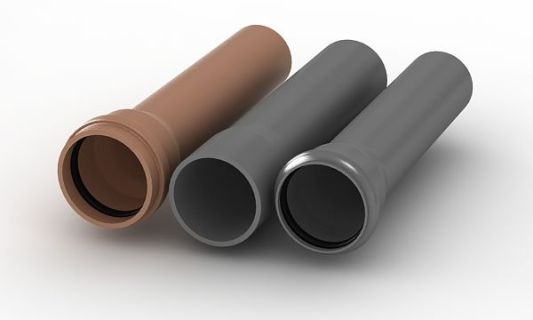
Corrugated pipes with and without reinforcement
Corrugated pipes are produced using co-extrusion technology, inner surface The products are represented by a smooth PP layer and the outer layer is made in the form of corrugation. These structures are used for the installation of large cross-section drainage systems, their placement depth reaches up to 15 m. The polymer composition is characterized by high resistance to aggressive media and is designed to transport media within temperature regime 0 - 40ºС.
Reinforced structures are supplemented with steel inclusions to achieve specified rigidity limits of 8 - 25 kN/mm2. The joining of products is ensured by means of a special coupling (shrinkable under the influence of high temperature) with further boiling using a manual extruder. The cross section varies between 16 -120 cm with a nominal length of 65 and 130 cm.
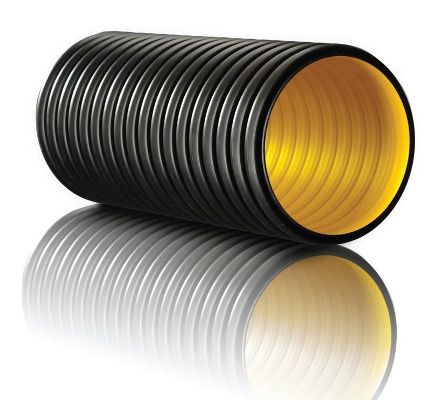
Product marking means:
- External section dn.
- Conditional cross-country ability di.
- Width of profile elements l i.
- Wall section en.
Comparative characteristics
For comparison with metal structures, the parameters of PP pipes are given below:

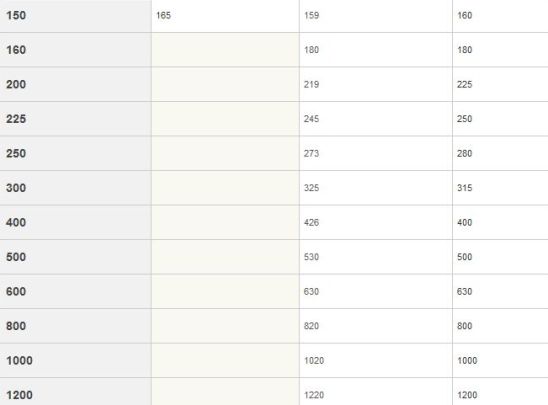
Estimated indicators
The marking of plastic pipes indicates only the outer diameters. To select the internal section, it is enough to make basic calculations with the initial parameters:
- Speed of transportation of liquid media through a pipeline.
- Water consumption.
To calculate the water supply of a residential premises, use the calculation formula:

In practice, the cross-section of water supply systems is taken to be 2 cm. In multi-storey premises, the following parameters are used:
- for risers in five-story buildings Ø25 mm;
- for internal wiring – 20 mm;
- for risers multi-storey buildings 32 mm.
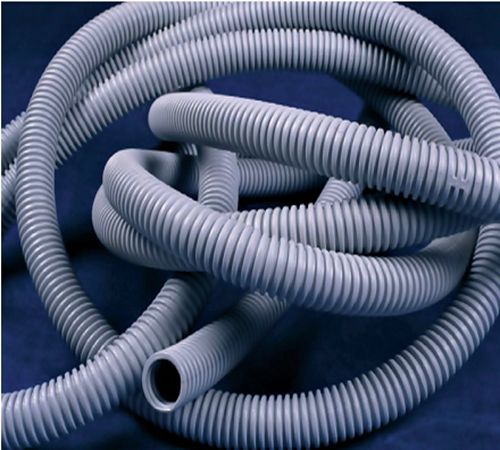
PP pipes - dimensions, table
PP pipes with a large cross-section are used for supplying water supply, heating and sewer systems to residential and industrial premises, individual microdistricts. So, water pipes with a cross section of 50 cm, they are used to supply cold drinking water from storage tanks to areas of the metropolis. PP pipes are not used for transporting coolant due to softening of structures under the influence of high temperatures.
The table provides an overview of the diameters of standard models.

In industry (for ventilation and sewerage), pipes with a cross-section of Ø400 mm are used.
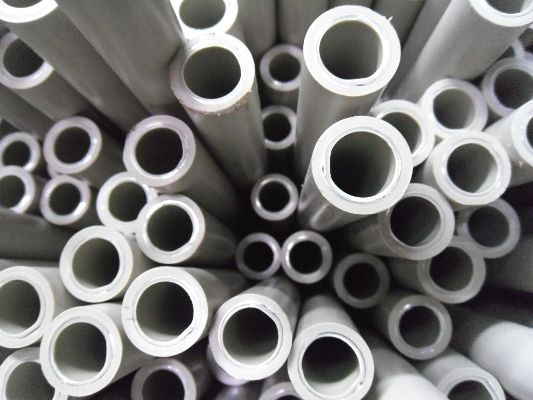
Pipe pressure
Polymer pipes are represented by a wide range:
- N10 (РN10) – voltage up to 10 atm., wall cross-section 1.9 - 10 mm. Serve for installation of the “warm floor” system, transportation cold water with a maximum temperature limit of +45 degrees. The cross section varies within the following range: external – 2…11 cm, internal – 1.6…9 cm.
- PN16 is a less commonly used type of structure, characterized by a pressure on the wall of 1.6 MPa. Used when heating up to +60 degrees.
- N20 (PN20) – withstands pressure of 20 atm. Material thickness 16…18.4 mm. The most popular model for arranging heating and water mains with maximum heating of the liquid up to 80 degrees. The outer diameter of the structures varies in the range of 1.6...11 cm, the inner diameter - 10.6...73.2 mm.
- N25 (РN25) – PP design with a working pressure of 2.5 MPa and the inclusion of an aluminum layer. They successfully cope with the tasks assigned to them when arranging heating and plumbing systems. Maximum heating of liquid +95 gr. The multicomponent structure contributes to high resistance to mechanical and thermal stress. The internal cross-section is set in the range 13.2...50 mm, external - 21.2...77.9 mm.
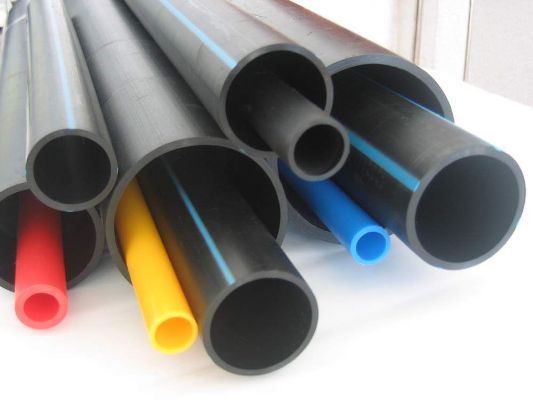
Composition of raw materials
Depending on the additives used, the following types of pipes are distinguished:
- PPR - random crystallized copolymer is used in production. Withstands a temperature range from 170 to +1400C. Parameters: 16...110 mm.
- PPH. Manufactured on the basis of modifiers (antistatic agents and fire retardants), giving high mechanical properties. Products are produced in large sizes, but the low temperature range allows them to be used only for technical purposes.
- PPB (block copolymer). Due to its molecular structure, the material is highly impact resistant and is used for underfloor heating systems.
- PPs (polyphenyl sulfide). It is characterized by maximum resistance to wear and heat, and is available in diameters of 20...1200 mm. Well used in ventilation, hot and cold system.
The cries about the dangers of polyvinyl chloride will not subside until new material artificial origin with similar characteristics. In the meantime, opponents of everything “non-ecological” talk about their favorite topics and drink the water entering the house through a PVC pipeline, plastic sewer pipes are doing their job properly. Questions about replacing old elements of the drainage system will sooner or later affect everyone. And you will also have to deal with the diameter of PVC sewer pipes, so why not find out about the sizes in advance?
PVC pipes are used in sewer systems
Why is a plastic pipeline reliable?
The use of PVC pipes as sewer pipes is justified by their characteristics: durable and lightweight products do not require special tools or complex manipulations when assembled into a single system. Besides, long term service, high throughput, ease of maintenance, resistance to aggressive compounds and difficult conditions environment make the production of plumbing plastic pipes popular and profitable.
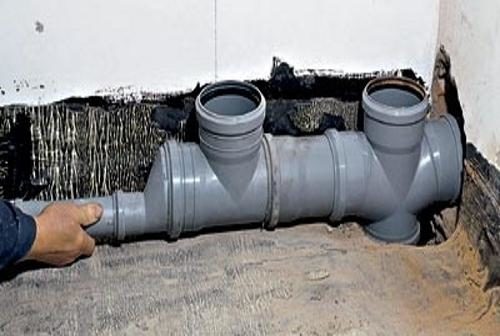
PVC pipes are popular due to their properties
Three dozen factories across the country cope with the existing demand. Manufacturers from Ulyanovsk, Chelyabinsk, Moscow, Nizhny Novgorod, Sverdlovsk and other regions offer PVC sanitary products of both large and small diameters for the installation of external and internal sewage systems.
When sizes matter: what you need to know about dimensions
To create outdoor and internal system drainage will require pipes of different diameters. The first category includes all water drain points in the apartment:
- sink;
- toilet;
- kitchen sink;
- washing machine;
- bath (shower cabin);
- Dishwasher.
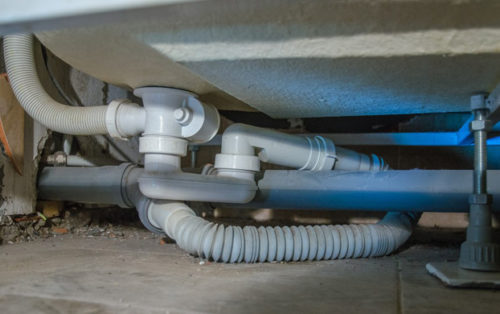
PVC pipes are used in sewerage installations in apartments and private houses
In an apartment, pipes with a cross-section of 50 mm are purchased to drain water using the gravity drainage principle. They cope with the task at every branch point of the pipeline, only the drain from the toilet will require a large size plumbing pipes– 11.0 cm. Here is a table with recommended sections.
Another type of drainage system is pressure sewerage. In this case wastewater move through the pipeline under pressure created pumping unit. Pressure sewer pipes do not differ from the usual ones, the assortment, however, is somewhat larger - 13 positions from 0.63 to 31.5 cm. But they are often purchased in a standard diameter.
Large size products (150 - 160 mm) are used to create external water drainage. There are no strict regulations on the diameter of such pipes. The main thing is that they should not be smaller than in the internal drainage system, and also have greater wall thickness.
For external sewerage of private houses, PVC pipe sizes of 150 or 250 mm are chosen. If an impressive load on the system is expected (many residents, several bathrooms), large diameter elements are purchased - up to 40.0 cm.
Professional builders will make all the necessary calculations themselves; for independent calculation of flow sections, there is a table with initial data and recommended sizes.
Two sizes of PVC pipes

When choosing PVC pipes, you should take into account the internal and external diameters
Considering the wall thickness, manufacturers indicate two diameters for their products: internal and external. The first plays a dominant role in the calculations, because the throughput depends on it. At the same time, a pipe with a large internal indicator may have thin walls. This quality makes it unsuitable for laying an external drainage system.
To compare both indicators, it is worth looking at the table; the dimensions inside and outside are really different. All indicators are given in mm.
| Outer D | Inner D | Wall thickness |
| 16 | 13,6 | 1,2 |
| 20 | 17,2 | 1,4 |
| 25 | 22,0 | 1,5 |
| 32 | 28,8 | 1,6 |
| 40 | 36,4 | 1,8 |
| 50 | 48,0 | 2,0 |
| 63 | 60,7 | 2,3 |
Features of using products with a diameter of 150 mm
A cross section of 15 cm is a small figure. Inside the house, a dishwasher or washing machine, which is justified, because the product is designed to pass hot water.
But the use of 150 mm pipeline elements is also possible for external sewerage. They are laid in a section from the house to the main system or lead directly to the septic tank. To implement the latter scenario, the collection container, as a rule, has a volume of up to 1500 liters. Such a septic tank is installed in houses with low water consumption - a 150 mm sewer is not designed for significant loads.

Construction of a private home is impossible without sewerage
Such a limitation does not make these plumbing products less popular. Hygiene, good throughput, availability and ease of installation of pipes with a diameter of 150 mm make them a leader among products of a similar size made from other materials.
Thus, when laying PVC sewer systems, it is important to take into account the internal diameter and wall thickness of the constituent elements. If there is no significant impact on the internal drainage system from the outside, then the underground pipeline suffers from soil pressure and temperature changes. Distinguish required product It is also possible by color: in the house, PVC pipes are gray in color, and for external systems they use elements of an orange or brick-red hue.








